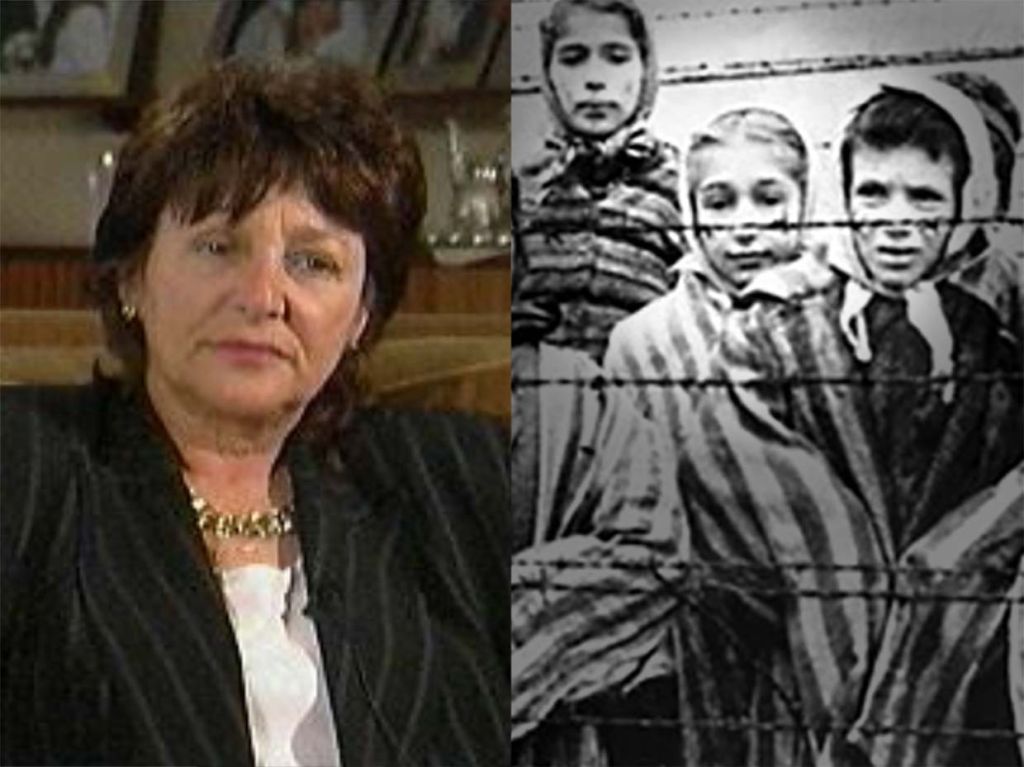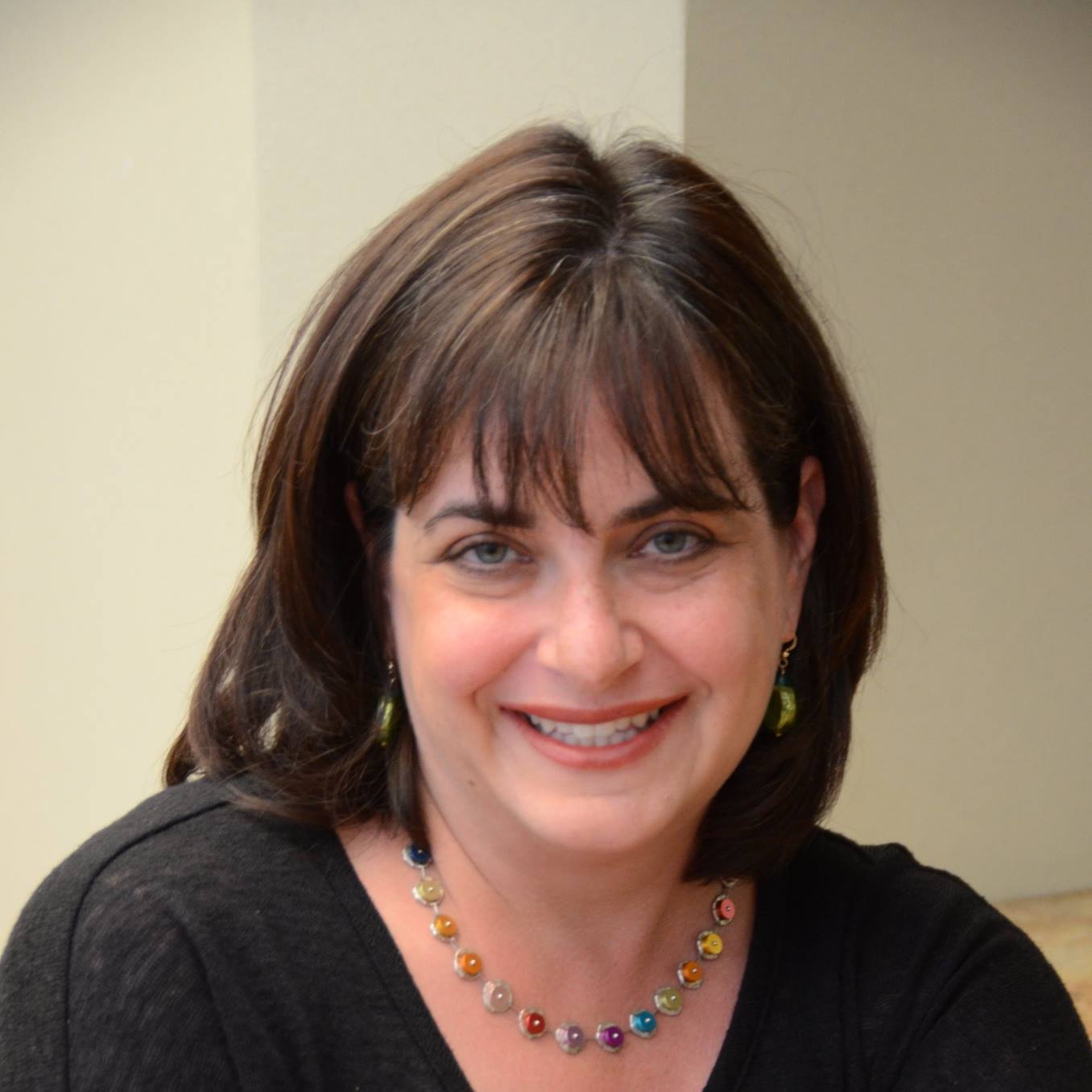Marta Wise, 88, Child Survivor in Iconic Auschwitz Photo, Focused on Educating Young People

USC Shoah Foundation mourns the passing of Marta (Weiss) Wise, who was ten years old when she was liberated from Auschwitz, having endured the medical torture of Josef Mengele, along with her sister, Eva (Weiss) Slonim. She was 88.
Marta and Eva were among a group of children pictured in a photograph—a still from a film shot by a Soviet cameraman soon after the liberation of Auschwitz—that became an iconic image of the horrors of the death camp where one million Jews were killed during the Holocaust.
In 2005, Yad Vashem tracked down six children from the photo, including Marta and Eva, and invited them to gather for a new photograph. In 2015, in commemoration of the 70th anniversary of the liberation of Auschwitz, a team at USC Shoah Foundation set out to identify all 13 children in the photo and then composed an interactive image that told the stories of each survivor, eight of whom were still alive at the time.
As early as the 1970s, Marta began sharing her story of survival with school groups in Australia, where she lived, and after moving to Israel, she volunteered at Yad Vashem - The World Holocaust Remembrance Center in Jerusalem. She spoke before the United Nations on World Holocaust Remembrance Day in 2016, and shared her story in a private meeting with then-Prince Charles at Yad Vashem in January 2020.
Marta recorded testimony with USC Shoah Foundation in November 1996. Her testimony, along with that of her sister Eva, is contained in the Visual History Archive.
Marta’s testimony is included in educational activities in Echoes & Reflections, a Holocaust education program from USC Shoah Foundation, ADL, and Yad Vashem, as well as on IWitness, USC Shoah Foundation’s online educational platform. Marta’s sister, Eva Slonim, is the aunt of Lee Liberman, Honorary Past Chair of USC Shoah Foundation’s Board of Councilors.
Marta Weiss was born in Bratislava, Czechoslovakia (now Slovakia), on Oct. 8, 1934, one of eight daughters and one son born to Eugene and Margaret Weiss. Her parents owned textile mills and shops, and Marta remembers a happy childhood in an affluent Orthodox family surrounded by aunts, uncles and cousins.

Persecution of Jews began in Bratislava with the establishment of the Slovak Republic, a Nazi puppet state created in March 1939. Marta’s father’s business was confiscated and deportations of Jews began in 1942, at which time Marta’s father and grandfather were arrested by the Slovak equivalent of the SS, then released for a large ransom. Eugene and Margaret decided to split the family up, eventually sending most of the children to live with relatives in Hungary, which was not yet under Nazi occupation. Eugene and Margaret went into hiding.
For the journey to Hungary, Marta posed as the gentile daughter of the German woman who escorted her. Once there, she lived for two years with the family of a distant cousin. After Germany invaded Hungary in 1944, Marta’s father sent the German woman to bring Marta to an aunt in Budapest. In the Budapest ghetto, Marta’s aunt gave her an agonizing choice: sail with a group of children to Palestine or return home to her parents. Marta, then nine years old, chose home. The boat to Palestine sank, killing every child on board, according to Marta’s biography in Echoes and Reflections.
The return to Bratislava involved a two-day trek through wheat fields. Her father then arranged for Marta, then 9, and 12-year-old Eva–who had stayed in Bratislava with her parents–to move to the town of Nitra, where they lived as Catholics with a nanny for two months. The sisters were arrested on Marta’s 10th birthday—October 8, 1944—and sent first to the Séréd transit camp and then a few weeks later after a horrific three-day journey in a cattle car, to the Auschwitz-II-Birkenau death camp.
Upon arrival, Eva was sent to the right and Marta to the left—to the gas chambers. But at that moment, Soviet planes flew overhead and the two lines were pushed back together. Marta and Eva were then sent—together—to the “family camp” section of Auschwitz II-Birkenau.
Marta remembers the hot needle as a number was tattooed onto her arm.
“It hurt terribly. And I was little and skinny and scared. And I was told not to cry, because it means that you at least will have a week to live, because they wouldn't bother to tattoo you if they don't keep you alive for a week,” she said in her testimony.
One day, while the children were crossing a plank across a sewer, a guard pushed Marta into the muck. A young boy – Marta never knew his name – jumped in to save her. The other inmates later did their best, with no access to laundry or a bath, to clean the pair up.
Then, Marta and Eva were sent to what they soon found out was the medical experimentation block run by Nazi doctor Josef Mengele, known as the “Angel of Death.”
Blood was drawn daily and injections were given regularly, and many of those who were injected died. In her testimony, Marta said that she never learned what had been injected into her. She remembers only the excruciating pain, and the dread she felt each time she saw Mengele approaching.
The inmates, including many sets of twins and people with dwarfism, were summoned to roll call on a whim, which could last 30 minutes or six hours, multiple times a day. In between, they spent time figuring out how to steal food – Marta, being so little, was often dispatched to dig in the trash bins, which could get her killed if she were found. She searched for potato peels, which she hoped would help her sister, who was suffering from dysentery.
In January 1945, as the Soviet Army advanced toward Auschwitz, the Germans evacuated most of the camp. Eva was in the hospital, too weak to walk. Marta dragged her sister by the hair through the snow to roll call, but Eva told Marta to go ahead without her. Marta refused to leave her sister. In the chaos, they managed to stay behind, and survived under increasingly sporadic, but still cruel, Nazi watch for a few more weeks.
On January 27, 1945, the Soviet Army liberated Auschwitz. Marta was 10 years old and weighed 37 pounds and Eva was deathly ill; both required several months of recuperation in a hospital. But when they overheard their Russian caretakers saying that the children would soon be taken to Russia, Eva and Marta decided to run. Over the next few months, they hitchhiked and walked back to Bratislava, stopping in displaced persons camps and foraging for food along the way.
Eva and Marta arrived in Bratislava on a Shabbat and found their father and brother in synagogue. Both of Marta’s parents had survived, and over the next few months her other siblings returned. Her younger sister Judith had been captured and killed in Auschwitz and her brother Kurt died in a drowning accident while on a picnic soon after the war.
The family left Czechoslovakia for Australia in 1948. In Melbourne, Marta finished school, studied physiotherapy and in 1957 married an Englishman, Harold Wise. They had three daughters, Judy, Michelle, and Miriam, and in 1998 Marta and Harold moved to Israel.
Marta said her family never talked about the war. She and Eva never told their parents about what they went through in Auschwitz, and her mother fainted when she saw her daughters, emaciated and behind barbed wire, in the photo of the children taken when Auschwitz was liberated. It wasn’t until the 50th anniversary of the end of the war, in 1995, that Eva and Marta talked to each other about their experiences.
Marta herself was not as reticent as the rest of her family. She told her daughters about her experience and for decades spoke to school groups and other audiences.
“I think it's important that youth hear something from a survivor. And let's face it, I'm one of the youngest survivors, from Auschwitz, definitely. I don't think there's many my age. And I think it's important that they hear it from yourself,” she said in her testimony.
Marta is survived by her husband Harold; their three daughters, Michelle Shir, Judy Joss, and Miriam Bruce; and many grandchildren and great-grandchildren. Marta’s sister Eva Slonim, the author of the memoir Gazing at the Stars: Memories of a Child Survivor, is 91 and lives in Melbourne.
Like this article? Get our e-newsletter.
Be the first to learn about new articles and personal stories like the one you've just read.
